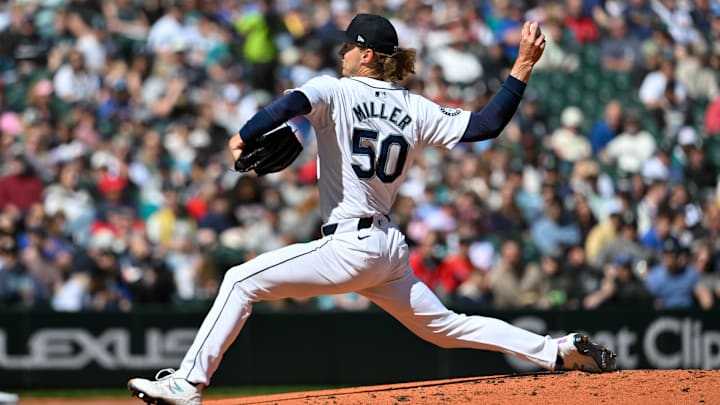Gerrit Cole, Justin Verlander, Jacob DeGrom, Max Scherzer, Sandy Alcantra, Spencer Strider, and Shane Beiber have a few things in common. They are all tremendous talents, frontline starters, hurl some of the most spin in the game, and are all on the shelf. The knee-jerk reaction would be to point the finger at the pitch timer. However, MLB conducted a 2023 study that tells another story, one that screams the nature of the business. That's one theory, but lets dig a little deepsr to find a root cause that could play a significant role in the Mariners' scaling back their starters' workload.
What's the root cause of all these pitching injuries?
All starters listed above (minus DeGrom) are innings-eaters who routinely reach at least 180 innings per season. MLB pitchers like Toronto's Chris Bassit attribute the high spin and the significant workload as major contributors to more injuries, suggesting that the arm injuries throughout the league are, in fact, a systemic issue.
Chris Bassitt thinks pitchers are getting hurt because teams are too obsessed with velocity.
— Talkin’ Baseball (@TalkinBaseball_) March 18, 2024
“[human bodies] are made to throw 91-92 and that’s ok” pic.twitter.com/EmGN3fzt5x
The Mariners' starting staff is the envy of the league, with many media pundits routinely ranking them among the top three league-wide. The five starters wearing Mariner teal are associated with superlatives like durability, innings-eaters, and high spin, which could result in a scary outcome if you subscribe to the Bassit theory. It's a risky game to play rolling out the same guys every five days, especially when four of the five are in uncharted waters.
Should the Mariners protect their arms?
Manager Scott Servais and pitching coach Pete Woodworth instituted an innings limit for young starters Bryce Miller and Bryan Woo in 2023. They found breaks in the schedule to skip starts and often had a quick leash if the game was out of hand. This season, they've stated that the training wheels are off for both promising arms, which could result in career-high innings, more high-spin pitches, and obviously more risk of injury.
☑️ Most K's in an MLB debut in @Mariners history
— MLB Pipeline (@MLBPipeline) May 3, 2023
☑️ 7th pitcher since 1961 to log at least 5 perfect innings in 1st start
MLB's No. 88 prospect Bryce Miller struck out 10 in a dominant first taste of the big leagues: pic.twitter.com/zkGE7Nobqi
Miller's Spencer Strider-esque 4-seam fastball is a tremendous pitch offering elite life and spin (2,605 RPM). The former Texas A&M Aggie throws the pitch nearly 60% of the time. With Strider likely out for a significant amount of time with Tommy John surgery, the Mariners' coaching staff might want to revert to the 2023 limitations for Miller, especially since Woo has already started the season on the injured list, fill-in Emerson Hancock will have an innings limit, and critical depth (Robbie Ray, Marco Gonzales, Tommy Milone) are all wearing different uniforms.
What's a good innings limit for the backend starters (and Hancock)? It all depends on how much risk the Mariners are willing to take on. Regardless, they've built some marginal depth behind them by claiming former top-10 prospect Levi Stoudt and signing 37-year-old Dallas Keuchel. How they use that depth hasn't been discussed yet, but the front office, mainly Jerry Dipoto, the President of Baseball Operations has often said teams need at least 11 starters to get through a 162-game season.
The bottom line is these injuries should play a vital role in the team's workload strategy for 2024 and beyond. Protecting those arms, specifically Miller and Woo, should be near the top of Woodworth's to-do list. If not, we might see them join the long list of high-quality pitchers on the shelf.
